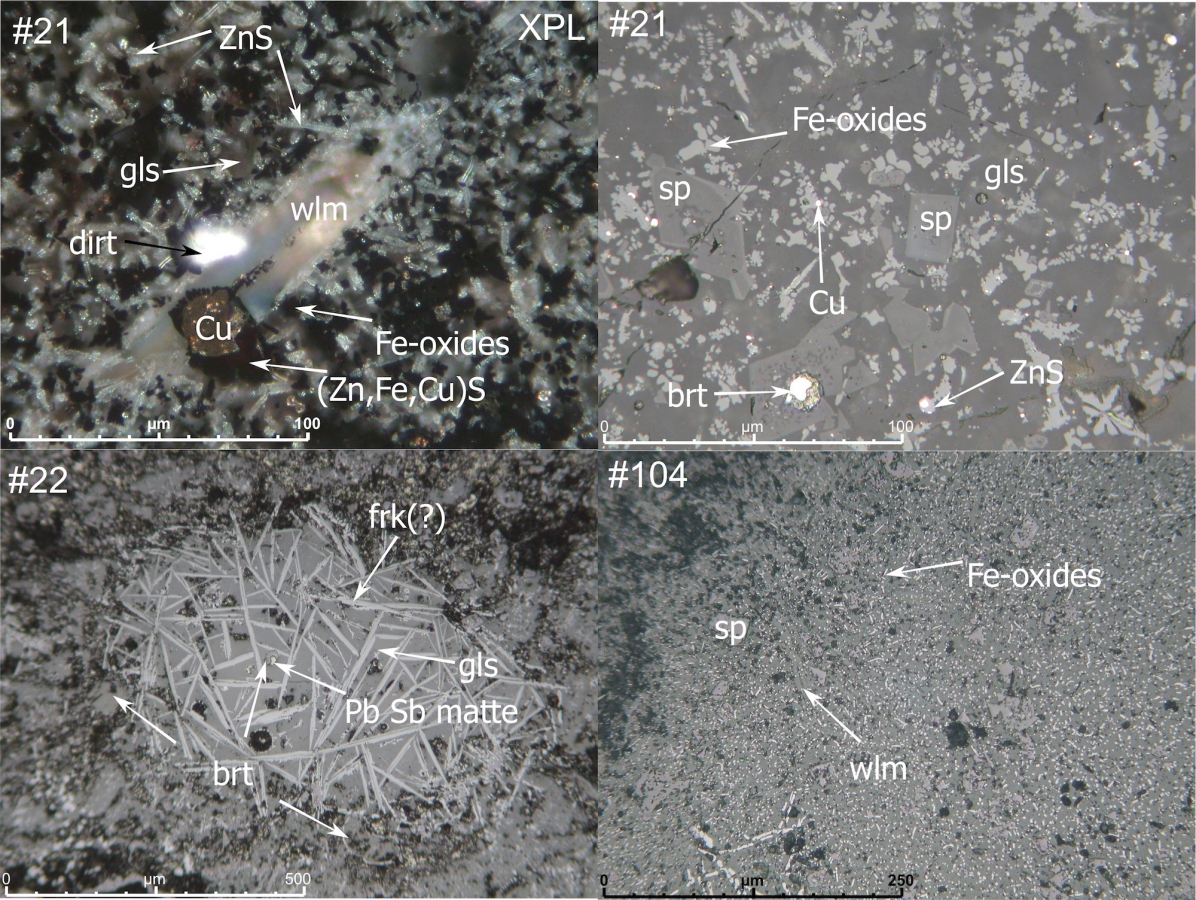Schlackologie – Analyse von Schlacken

Slag samples of a medieval (12th century) copper smelting furnace.
Top left: #21, XPL. Under crossed polarisers the zinc sulphide can be seen as tiny dendrites within the glassy matrix. The other phases are willemite (wlm) and copper (Cu), which is usually asso ciated with the (Zn,Fe,Cu)S phase, an accompanying phase of copper matte at the Huneberg, from which it probably segregates upon solidification. Free iron oxides are seen as dark and much larger dendrites.
Top right: Another section of #21, under plain polarised light. It shows the abundant spinels, the iron oxides and copper inclusions. Most notably it shows the free baryte (brt) inclusion in the slag matrix.
Bottom left: #22, shows more free baryte (brt), together with a lead antimony matte. The long needles are a mixed iron and zinc oxides and are believed to be franklinite (frk?). #104, is rather more affected by corrosion than the other two samples. It shows mainly spinel (sp), free iron oxides and some willemite (wlm). Spinels are in the same order of magnitude than in the other samples.
Dieser umgangssprachliche Begriff wird von einigen Kollegen in den archäometrischen Disziplinen verwendet, wenn es um die Analyse und Interpretation von meist metallurgischen Schlacken geht. Aber, warum werden Schlacken überhaupt untersucht und was genau sind Schlacken eigentlich?
Was sind Schlacken und woraus bestehen sie?
Gemeinhin werden Schlacken als diejenigen Neben- und Beiprodukte der Metallurgie bezeichnet, die aufgrund ihrer vermeintlichen Wertlosigkeit am Produktionsort verbleiben. Metallurgische Schlacke ist in der Regel aus fünf Einzelbestandteilen zusammengesetzt: Continue reading